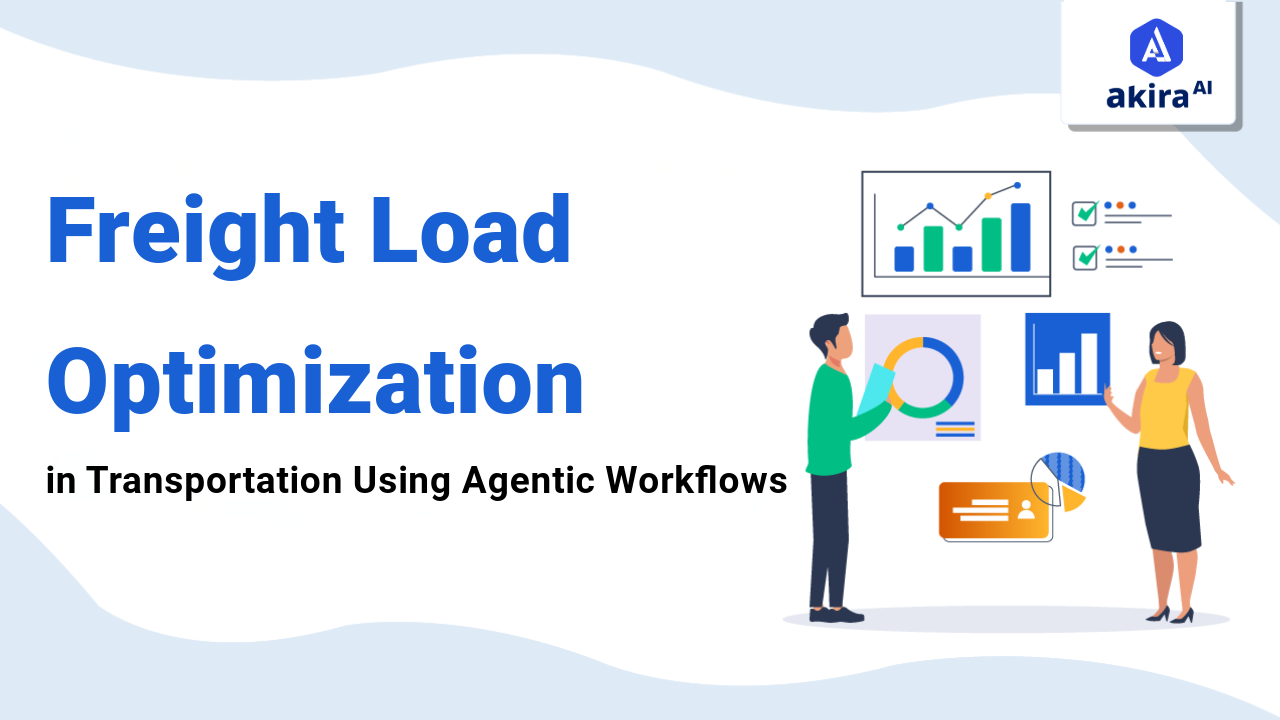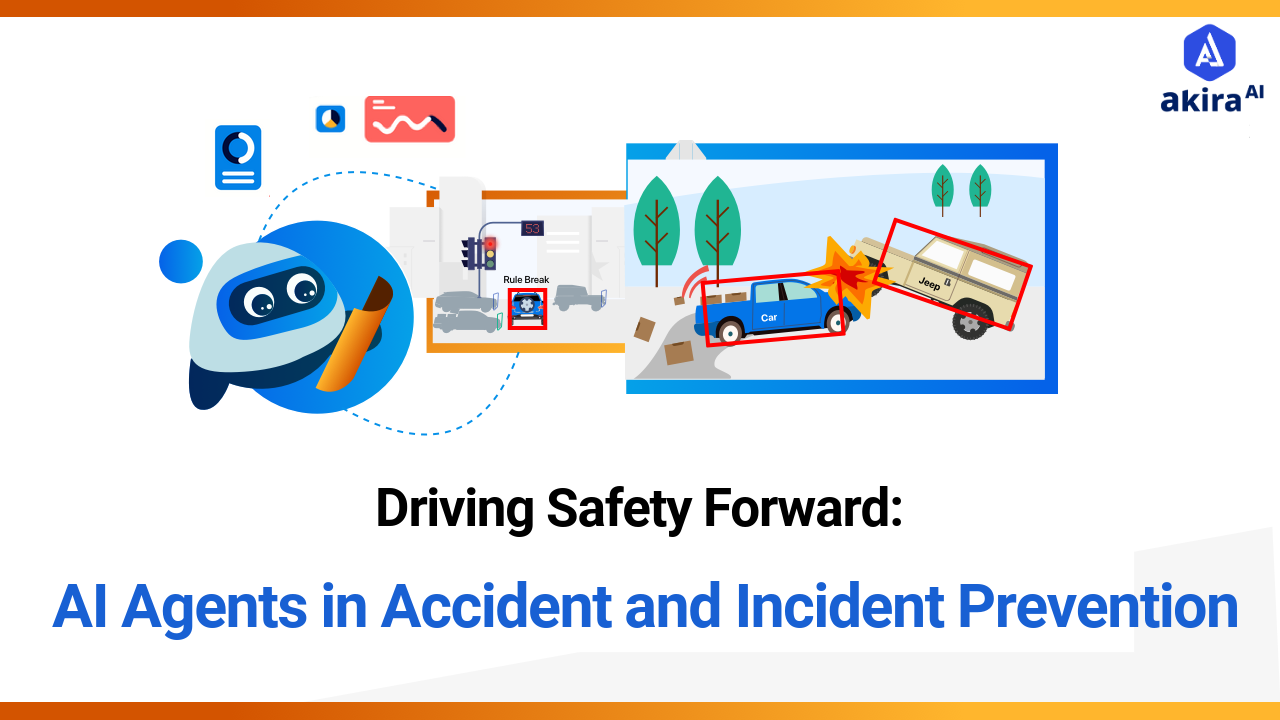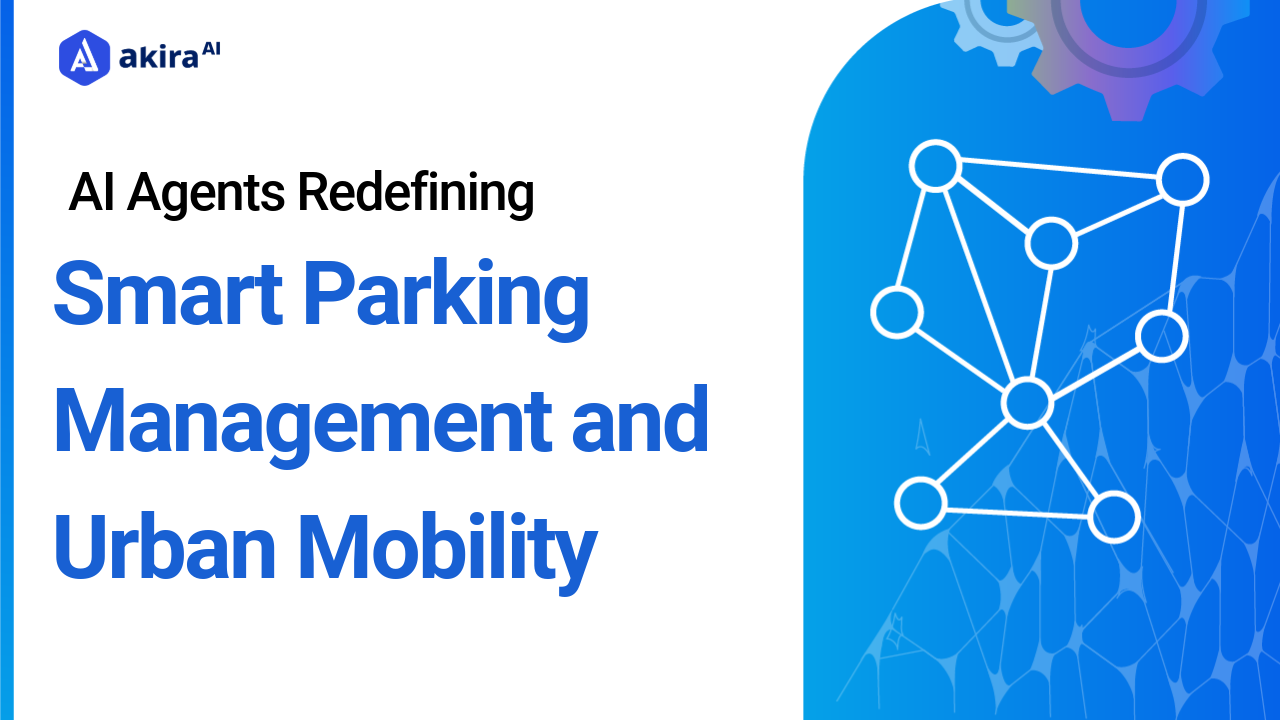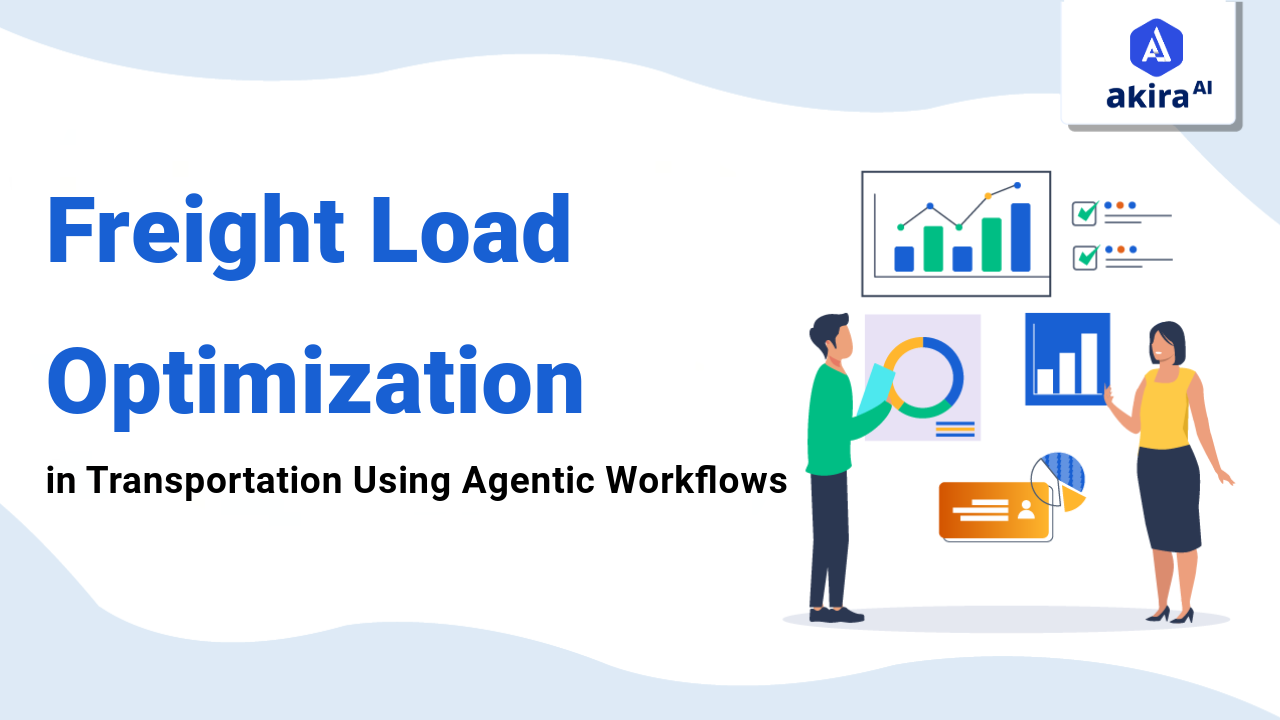Key Insights
Freight Load Optimization, powered by AI agents and agentic workflows, is revolutionizing transportation by maximizing efficiency and reducing costs. By leveraging real-time data and advanced algorithms, companies can enhance load planning, streamline operations, and improve delivery times. As e-commerce demands grow, embracing these technologies is crucial for staying competitive in a fast-paced market.

Do you ever ask yourself how transportation companies can bring commodities to your doorsteps so quickly? The magic lies in Freight Load Optimization! As e-commerce continues to rise, effective transportation has become more crucial than ever, and agentic workflows powered by AI agents are leading the charge. Such technologies streamline operations, determine efficient routes, minimize costs associated with the process, and shorten the delivery period.
In this blog, we’ll break down ways in which these innovations are revolutionizing transportation. With no further ado, let's find out how freight optimization influences the flow of goods today for efficiency and customer satisfaction!
What is Freight Load Optimization in Transportation?
Freight Load Optimization refers to the systematic approach of maximizing the utilization of space and resources during the transportation of goods. This involves examining factors such as size and weight of the carriage, weight distribution within the carriage area, and carriage route among other things with a view of having shipments delivered efficiently. The primary goal is to reduce costs, minimize environmental impact, and improve delivery times. By leveraging advanced algorithms and data analytics, companies can achieve higher levels of efficiency, thereby enhancing overall operational performance.
This optimization process involves several steps, including route planning, load planning, and ongoing adjustments based on real-time data. With the growing complexity of global supply chains, effective load optimization is no longer optional but a necessity for companies aiming to remain competitive.
A Brief Overview of Freight Load Optimization
At its core, Freight Load Optimization employs various techniques to streamline the transportation process. The emergence of AI agents has further advanced this field, providing intelligent solutions that adapt to real-time conditions, such as traffic patterns and weather changes. Many of these systems are built to be able to approximate data rapidly to provide transportation companies with decision-making support for the enhancement of the efficiency of the services. Through machine learning and data analytics, companies can predict potential delays and proactively address them, ensuring that shipments arrive on time.
Autonomous agents play a crucial role in enhancing Freight Load Optimization. These agents leverage machine learning and data analytics to assess multiple realistic transportation situations. Thus, acting in the multi-agent system, they can exchange data and cooperate to obtain an overall view of the existing freight conditions. They help in load planning by predicting the best configurations for cargo placement, minimizing wasted space, and reducing transportation costs.
Traditional vs. Agentic AI Freight Load Optimization
|
Feature |
Traditional Freight Load Optimization |
Agentic AI Freight Load Optimization |
|
Decision-Making Process |
Manual analysis by transportation teams |
Automated decision-making using AI agents |
|
Data Analysis |
Limited to historical data |
Real-time data processing and predictive analytics |
|
Adaptability |
Static algorithms with limited adaptability |
Dynamic and adaptive strategies through continuous learning |
|
Efficiency |
Lower efficiency due to human error |
Higher efficiency driven by AI insights |
|
Cost Reduction |
Moderate impact on costs |
Significant cost savings through optimization |
|
Speed of Execution |
Slower due to manual interventions |
Rapid execution of load optimization strategies |
|
Scalability |
Difficult to scale with increasing complexity |
Easily scalable as AI systems adapt to larger datasets |
Akira AI Multi-agent in Action
Akira AI employs a range of agents to optimize freight transportation effectively, enhancing overall efficiency and performance.
-
Data Collection Agent: The Data Collection Agent receives traffic, weather, and shipment information in real-time. In its functionality, it uses IoT sensors to post changes in cargo status, such as temperature for perishable food, thus being useful in load optimization.
-
Load Planning Agent: This data is used by the Load Planning Agent to determine the appropriate loading patterns and its best route. It uses formulas based on the weight distribution with reference to the compatibility of the cargo to be loaded to allow maximum utilization of the space with minimal or no extra costs incurred.
-
Communication Agent: The Communication Agent is responsible for managing all communication between agents as well as stakeholders. It handles alerts and notifications that update the relevant parties about shipments for the right load allocation.
-
Feedback Agent: The Feedback Agent analyzes the effectiveness of strategies and provides insights for improvement. By gathering post-delivery data, it refines algorithms and enhances decision-making.
-
Route Optimization Agent: The Route Optimization Agent looks at the traffic conditions and makes adjustments to the shipment route in real time. Based on historical data and statistical modeling, it predicts disruptions and, therefore, allows proactive adjustments.
-
Cost Analysis Agent: The Cost Analysis Agent determines the probability of transportation cost for a certain route and load. It identifies where and how an organization may reduce its costs, thus helping businesses become more efficient in the deployment of their financial resources.
-
Performance Monitoring Agent: Finally, the Performance Monitoring Agent focuses on other measures, including delivery time and cost per shipment, which are major KPIs. It produces reports to enable management to ensure that transport operations support business strategies
Use Cases and Applications of Freight Load Optimization
-
Meeting the Demands of E-commerce: Given the internet shopping craze, transporters are compelled to transport their goods fast and expeditiously. Load optimization ensures delivery vehicles are loaded to help cut down on delivery trips as well as costs while meeting the customer’s desire for quick delivery.
-
Streamlining Retail Distribution Networks: Warehouse-to-store transportation is critical in retail. Reducing transport costs and inventory levels guarantees that various products are delivered to appropriate places at the required time.
-
Preserving Freshness in Food and Beverage Transport: Ensuring goods remain fresh during transportation is very important, especially in the food and beverage industry. Optimizing load configurations reduces wastage and conforms to health regulations.
-
Enhancing Efficiency in Automotive Logistics: The automotive industry relies on the efficient movement of parts and finished vehicles. Freight optimization techniques lower distribution cycle time and increase the company's ability to respond to market fluctuations.
-
Optimizing Heavy Machinery Transport: To optimize loads as well as safety during the transportation of heavy machinery and other materials appropriate load management is done. AI agents analyze load-carrying capacity and space available so that they can justify the loading patterns effectively.
-
Navigating the Complexities of International Shipping: Optimizing freight loads can also result in the reduction of the cost of shipping containers among companies engaged in international business. AI-driven solutions determine the optimal routes and load configurations while keeping the behavior in line with International Standards.
Operational Benefits of AI Agents for Freight Load Optimization
Integrating AI agents into Freight Load Optimization brings numerous operational benefits, including:
-
Increased Productivity: Autonomous agents are expected to perform 80% of transport-related tasks by 2025 for human resources to be more involved in decision-making. This shift can result in an improvement in productivity of as much as 25% over the year, which can result in substantial annual returns.
-
Improved Efficiency: Organizations using AI technologies can anticipate a 30%, productivity increase and a 25% boost in overall efficiency. This improvement can reduce costs by about 15%, often resulting in ROI exceeding 200% over five years.
-
Reduced Human Error: Automated systems lower the risks of manual processes, resulting in fewer mistakes. Companies can see error rates drop by 50%, translating to substantial savings in avoided costs.
-
Enhanced Visibility: These agents offer real-time tracking, giving transportation managers better visibility into operations. This can lead to a 20% reduction in delays, saving companies up to $1.5 million annually.
-
Adaptability to Market Changes: AI agents quickly adjust to demand fluctuations, ensuring transportation remains agile. This adaptability can enhance customer satisfaction and potentially increase annual revenue.
Technologies Transforming in Freight Load Optimization
The following technologies are driving significant transformations in Freight Load Optimization through the use of AI agents:
-
Machine Learning: ML algorithms help in improving the forecasting of load, planning, and routing since the agents use historical data to give a prognosis.
-
Big Data Analytics: Analyzes large volumes of data to extract knowledge that can help organizations work on their transport planning, making it easier for companies to make profits in transportation.
-
Internet of Things (IoT): Provides real-time tracking and monitoring of shipments, allowing companies to make data-driven adjustments to their transportation operations.
-
Cloud Computing: Facilitates scalable and efficient data storage and access for transportation operations, enabling companies to utilize advanced AI algorithms without extensive on-premises infrastructure.
-
Blockchain Technology: Enhances transparency and security in the supply chain by providing immutable records of transactions, improving trust among stakeholders.
-
Autonomous Vehicles: Self-driving technology utilization in freight transportation results in cost-efficiency changes in terms of last-mile delivery.
-
Robotics Process Automation (RPA): Automates routine tasks in transportation operations, reducing human intervention and increasing operational speed.
The Future Trends for Freight Load Optimization
As technology continues to evolve, the future of AI agents in Freight Load Optimization looks promising. Here are some anticipated developments:
-
Enhanced Decision-Making: Advanced algorithms used by future AI agents will be able to streamline the decision-making process for faster and better results. Advanced machine learning models shall produce better results, especially as new data streams into the system.
-
Greater Collaboration: Multiagent systems will evolve to work together seamlessly, enhancing transportation coordination. These systems will share real-time information, leading to more cohesive operations.
-
Sustainability Focus: Agentic AI will prioritize eco-friendly solutions, optimize routes to minimize carbon footprints, and promote sustainable practices across the supply chain. This shift will ensure that transportation falls in line with international sustainability policies.
-
Customization and Personalization: Autonomous agents will allow targeted transportation services that meet specific customer needs. These trends regarding customization shall enhance the quality of service delivery and increase satisfaction amongst consumers.
-
Enhanced Security Measures: As transportation becomes more digitized, robust security measures will be essential. AI agents will incorporate AI guardrails to protect sensitive data and ensure compliance with regulations, enhancing overall security in operations.
Conclusion: AI Agents for Freight Load Optimization
In exploring Freight Load Optimization, we’ve uncovered its transformative potential for the transportation industry. Companies can significantly enhance their logistics strategies by leveraging agentic workflows and AI agents. The real-world examples illustrate how optimizing routes and costs improves efficiency and customer satisfaction. As e-commerce continues to evolve, businesses must integrate these advancements into their operations. Embracing these technologies is not just about staying competitive; it’s about paving the way for a more efficient future in transportation.
-
Explore More About Billing And Payment Processing in Transportation


